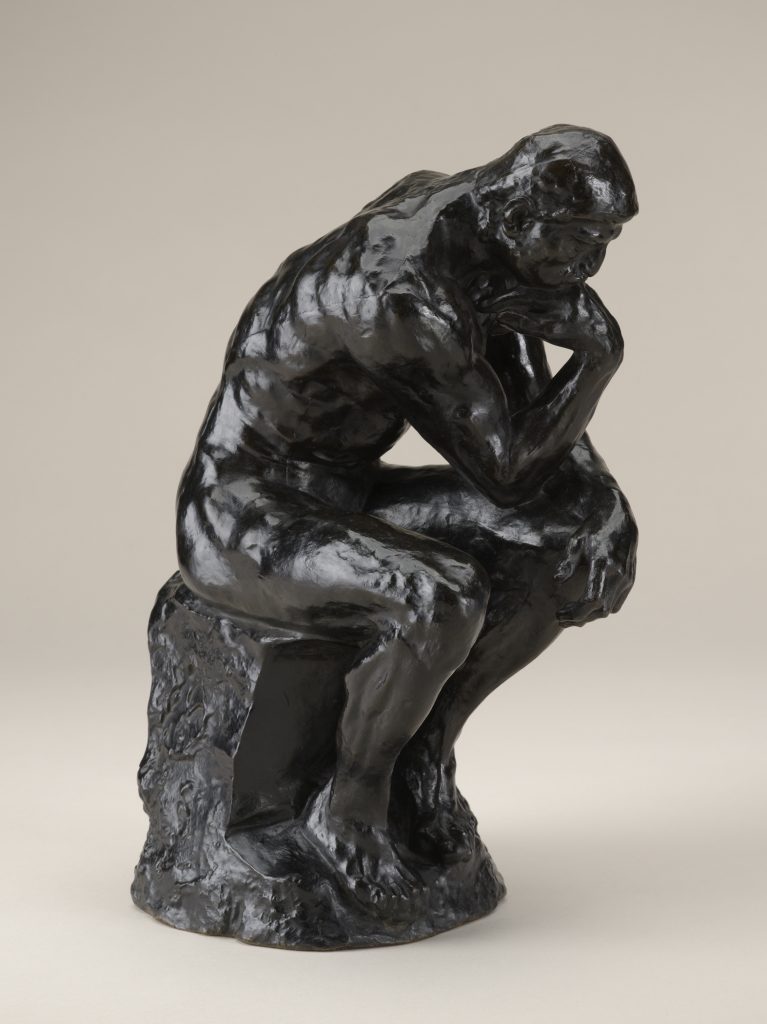The Thinker (work of art)
Artwork Info
Key Ideas about this Work of Art
- Auguste Rodin was an innovative sculptor who was influenced by classical Greco-Roman traditions of sculpting as well as psychology.
- Rodin created this sculpture in bronze. The high copper content of bronze makes it turn green when it is left outdoors.
- This sculpture was inspired by the poet Dante Alighieri and his epic poem Inferno. The Thinker depicts Dante gazing into the distance, perhaps down into the depths of hell.
- The Thinker was created for the archway of The Gates of Hell, a doorway designed for a decorative arts museum in Paris that never opened.
Learn More
The Thinker was designed to be part of the center archway (called a tympanum) of The Gates of Hell, a giant doorway for a museum of decorative arts in Paris. Rodin’s starting point for this commissioned work was the epic poem Inferno, written by the medieval Italian poet Dante Alighieri.
Rodin later explained his inspiration for The Thinker:
In days long gone by, I conceived of the idea of the Gates of Hell. Before the door, seated on a rock, Dante, thinking of the plan of his poem … This project was not realized. Thin, ascetic Dante separated from the whole would have been without meaning. Guided by my first impression, I conceived of another thinker, a naked man, seated upon a rock, his feet drawn up under him, his fist against his teeth, he dreams. The fertile thought slowly elaborates itself within his brain. He is no longer dreamer, he is creator.
Rodin never said what his figure is thinking about, but he did express his thoughts about his creation shortly before his death:
What makes my Thinker think is that he thinks not only with his brain, with his knitted brow, his distended nostrils and compressed lips, but with every muscle of his arms, back and legs, with his clenched fist and gripping toes.
The subject of Rodin’s sculpture is consumed by his thoughts. The act of thinking requires him to use not just his mind but his entire body.
tags: meaning, power, reflection, artist’s process
Additional Resources
Resources for Teachers:
- Read an article about Rodin’s life and view more examples of his work.
- Watch a video to learn what inspired Rodin and how he challenged traditional notions of beauty.
- Watch a video about Rodin’s process and The Thinker.
- Watch a video to hear an NCMA educator discuss The Thinker.
Resources for Students:
- Watch a video summary of Dante’s Inferno, the epic poem that inspired Rodin to create The Thinker.
- View a photo of the earliest version of The Thinker.
- Watch a short video about the doorway on which this sculpture was designed to sit.

